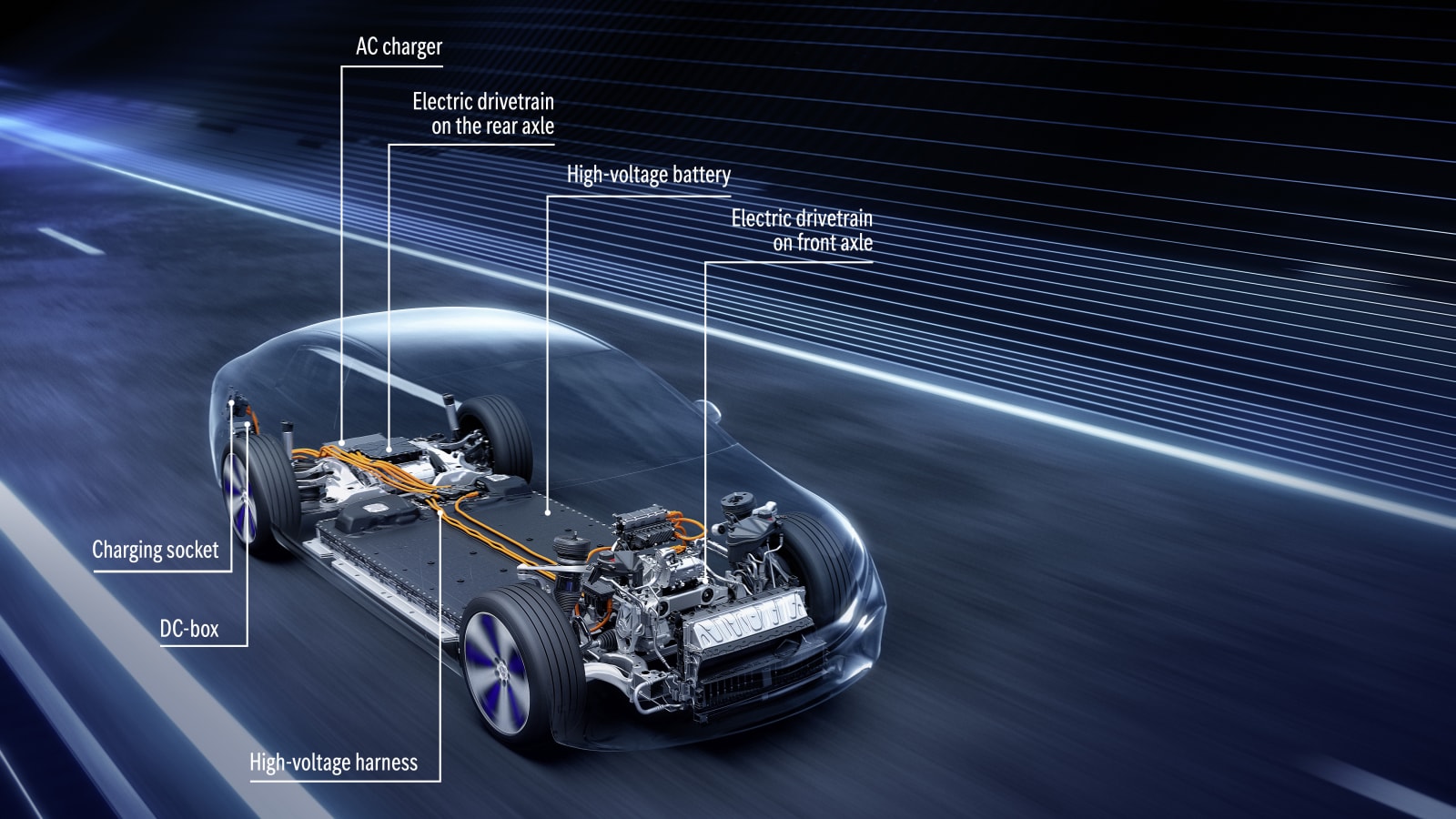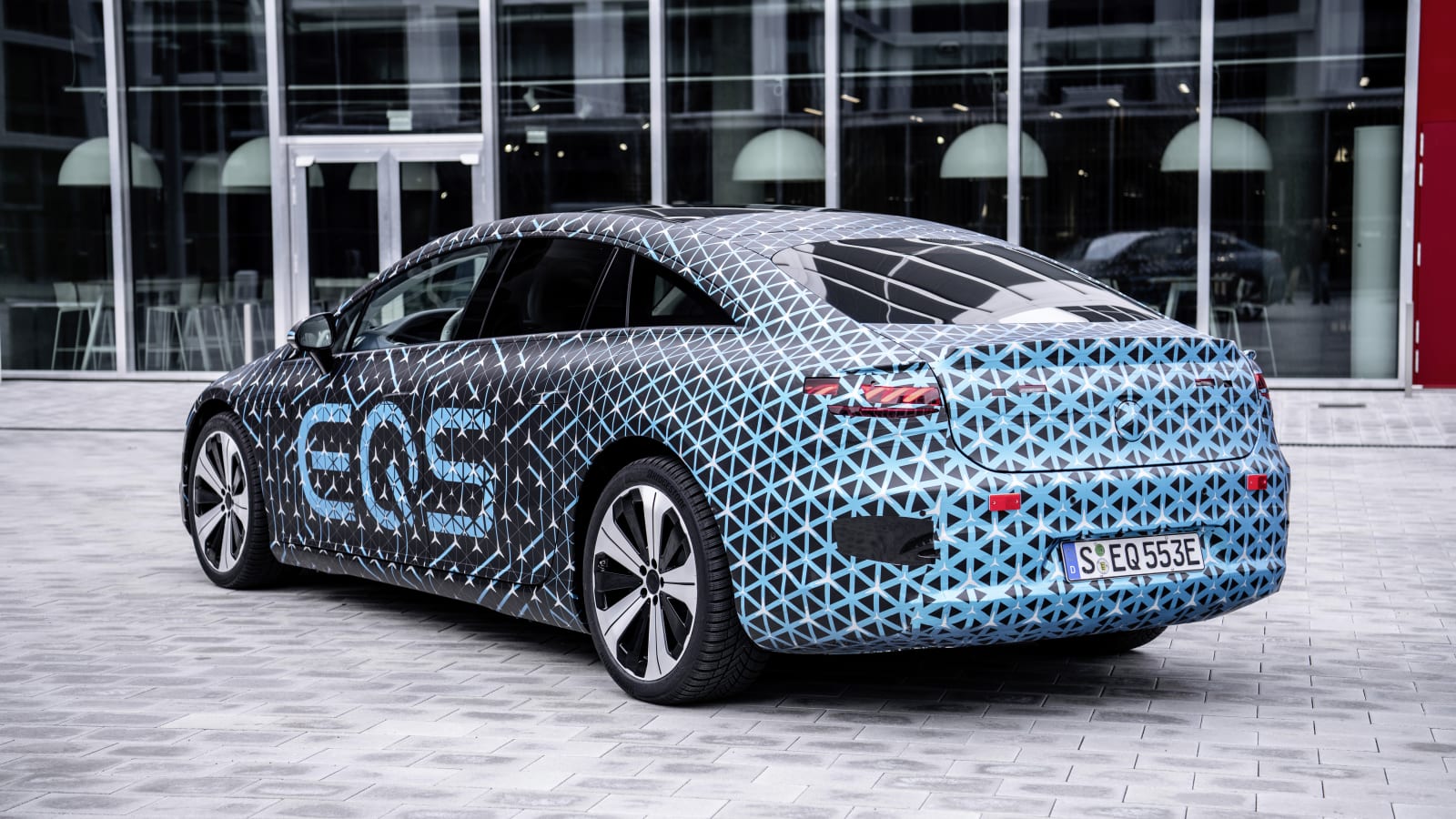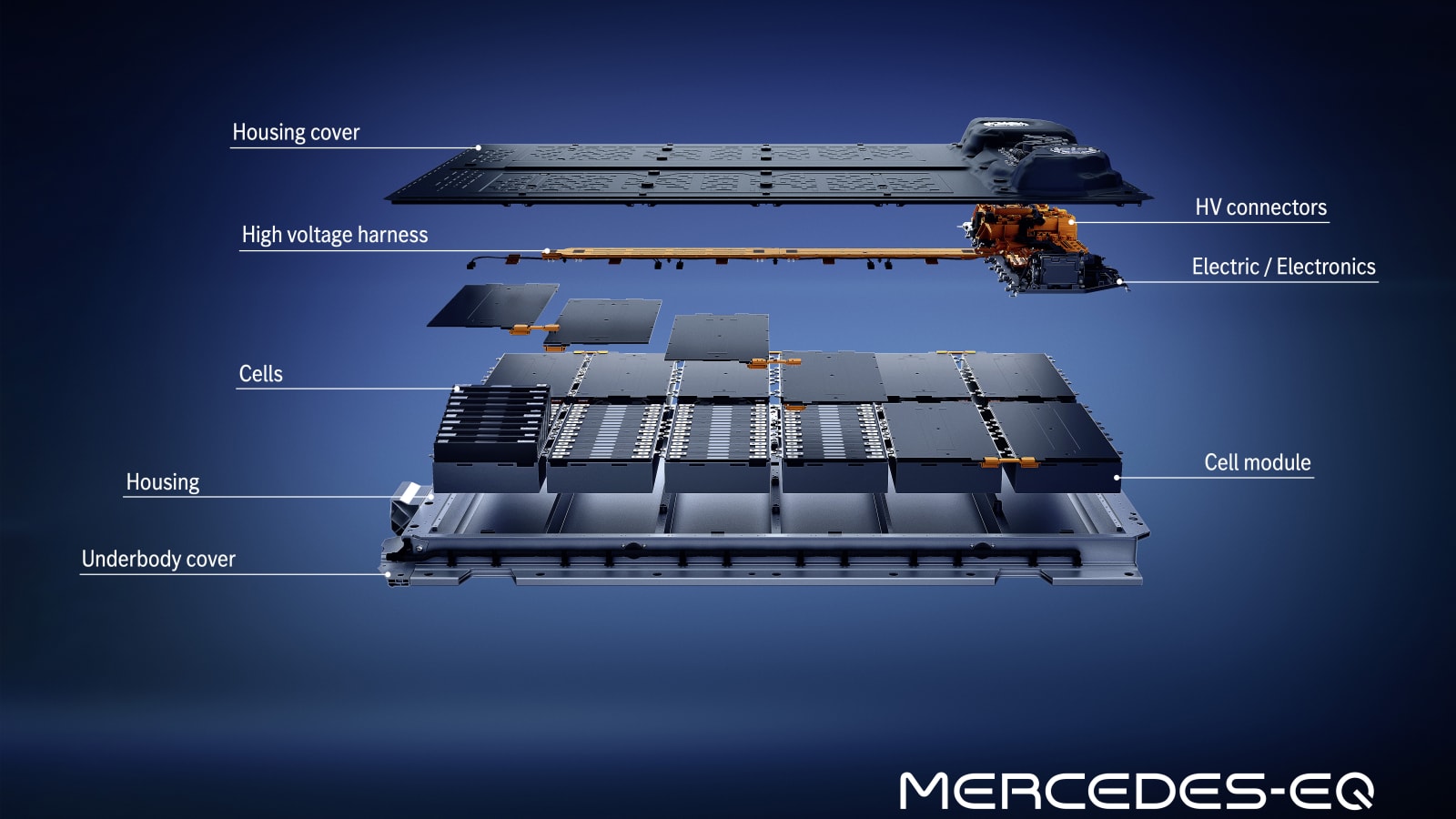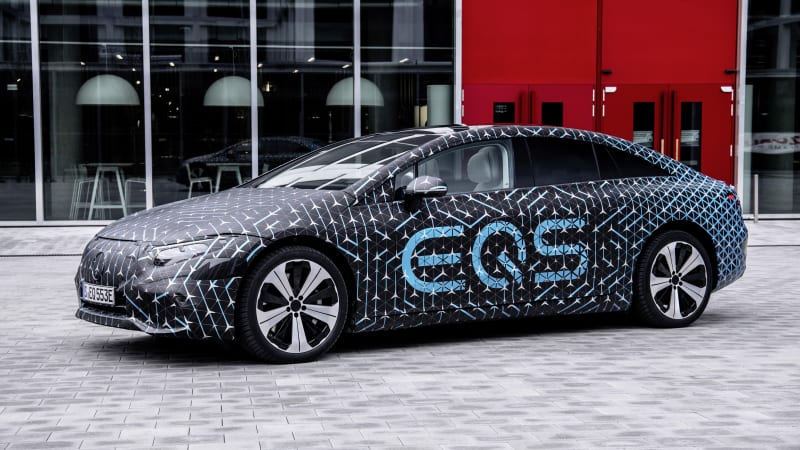Mercedes-Benz took us on a virtual ride in the new Mercedes-EQS with Dr. Fabbian Wuttke, project manager, sedan development. Along the way, he revealed some facts, figures, and more about the electric sedan we’ve been waiting so patiently for.
The large number we heard yesterday was that Mercedes claimed 478 miles of range during WLTP testing. It’s hard to say what that will mean for EPA testing, but we can safely assume the number will be over 400 miles. That’s down to a battery pack with 107.8 kWh of usable storage (we asked about the total potential size of the battery, but Mercedes isn’t saying it yet). This gigantic battery pack is the larger of the two packs that will be available, although Mercedes is also not yet revealing the capacity of the smaller pack. However, Mercedes brags about extremely fast charging and 400-volt architecture,
You can charge the EQS at fast charging stations with speeds up to 200 kW. That’s good for 186 miles of range after just 15 minutes of charging (using the WLTP range as the basis for this argument). That equates to approximately 39% charge in 15 minutes. This high charging speed is maintained by the battery temperature and the vehicle’s charge management system. An “ECO Charge Mode” is available that slows down the charging speed if you are concerned about the wear and tear and aging of the battery at those charging rates.

A simple charging method called “Plug & Play” will be available to US owners (free for only two years) that, according to Mercedes, will allow you to simply drive up and plug it in without the hassle of an app or other technology. It’s still sketchy, but Mercedes says you can use this technology at more than 90% of the country’s public charging stations.
Mercedes is also talking about what will power those batteries. From the outset, several versions of the EQS with varied power outputs are available. The base rear-wheel drive EQS will produce 329 horsepower from a single engine on the rear axle of the car. There will also be a two-engine, four-wheel drive version (one rear and one front) with 516 hp – the rear engine is more powerful than the front. Mercedes is teasing an “even more powerful performance version” that will come at a later date. That sounds like an AMG variant to us. The 0-100 km / h time on the 516 horse version is 4.3 seconds, while the single-engine EQS does it in 6.3 seconds. Top speed for both is limited to 210 km / h.
Mercedes says this electric version of 4Matic four-wheel drive has a much faster response than its mechanical four-wheel drive systems. That is to be expected with electric motors. The motors themselves are designed with a special foam pad around them for exceptional resistance to NVH issues. A lot of extra work contributes to making these engines incredibly quiet and suitable for the sound and vibration comfort of the S-Class. Acoustic foam used throughout the body ensures silence in the cabin. New technologies have also been developed for the window seals and door construction to reduce noise – an “acoustic comfort package” will be available that will add laminated glass to the car. However, Mercedes also points out that the drag coefficient of 0.20 (the best of all current production cars) also reduces wind noise. It has a smooth bottom, aerodynamic spoilers and you can choose between 19-, 20- and 21-inch wheels. Also contributing to this figure are special new A-pillar moldings and seamless door handles.

With the EQS, driving with one pedal is possible. Shift paddles on the steering wheel allow you to switch between three levels of brake recovery. Also useful in the city will be a four-wheel steering. As with the new S-Class (the systems are almost identical), Mercedes lets you choose between an option where the rear wheels can be turned 4.5 degrees or 10 degrees. At best, the turning circle can be reduced to just 10 meters. Interestingly, Mercedes tells us that four-wheel steering will be one of the items it offers as a post-purchase upgrade, allowing you to upgrade to the 10-degree lock if you realize that the 4.5 isn’t enough at first.
Another item highlighted by Mercedes is the “Navigation with electrical intelligence” system. Like many electric vehicles, the EQS plans your route around available charging stations. It also takes real-time traffic information into account and you can automatically set how much charge you want to keep in reserve to reach a charging station. The EQS can estimate on screen how much a charge stop will cost you and will automatically monitor your efficiency and navigation system, in case you need to switch to ECO mode to make the last miles to a power outlet.

Mercedes also pointed out a few instances where it uses sustainable and green materials to manufacture the EQS. In total, the EQS contains approximately 176 pounds of recycled or renewable materials. These include recycled plastic for cable trays, recycled yarn for carpeting and even sustainably produced aluminum for the hood. The battery pack itself (developed in-house by Mercedes) uses less cobalt and improved battery chemistry than Mercedes’ previous generation battery technology, and it is also capable of receiving over-the-air updates from the battery management system. Don’t get it wrong, though. The EQS can still be decked out completely with genuine leather and other ultra-luxe materials – vegan options aren’t to be mentioned here.
Even though this is the second recent deep dive we’ve had into the EQS, Mercedes is still hesitant to reveal the whole car. That virtual event will take place on April 15th, so the wait is almost over.
Related video:
